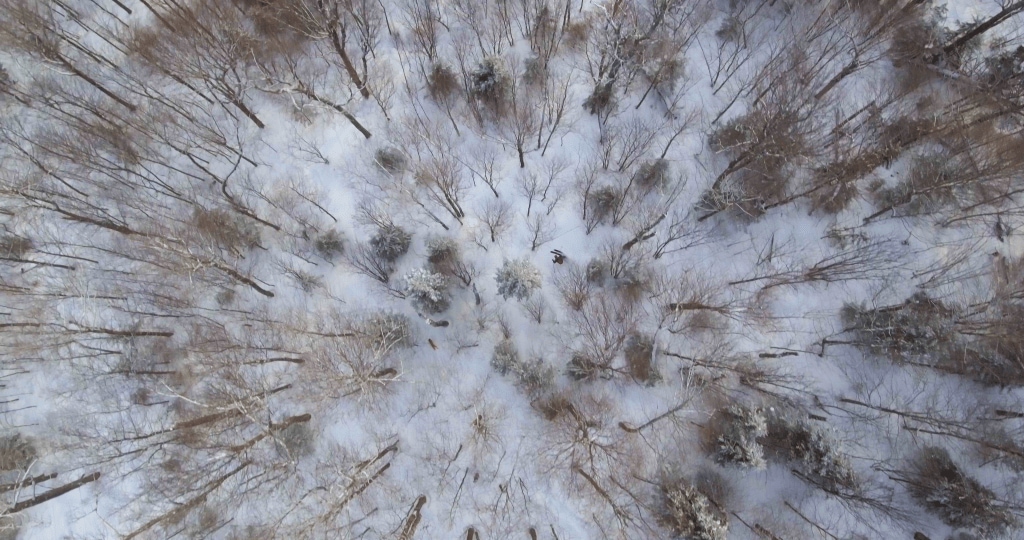When a grassroots organization in Vermont partnered with federal land managers to open skiable glades on public lands, they forged a new model for backcountry terrain from New York to Maine.
Zac Freeman learned to ski in a sloping hayfield behind his parents’ house in Randolph, Vermont, a town of around 5,000 that sits just east of Green Mountain National Forest. When Freeman took up backcountry skiing in his teenage years, those wild forests were closer than any of Vermont’s 20 ski resorts. So, he’d strap skis onto his dad’s frame pack and hike for his turns. He’d bushwhack uphill, then slalom through hardwood trees, saplings whipping his legs.
After a stint out West—and skiing naturally wide-open glades—Freeman returned to the East Coast with a new perspective. He thought, what if Vermont’s public lands were managed for backcountry skiing? So in 2013, Freeman and his friends launched the nonprofit Rochester/Randolph Area Sports Trail Alliance (RASTA), a chapter member of Vermont Backcountry Coalition. Its mission: Develop backcountry ski access on public and private land, then map and promote the terrain for local use.
“We knew there was a missed opportunity to use this incredible resource,” says RASTA president Angus McCusker. Now, five years later, RASTA has opened two new backcountry zones—building trailheads, clearing trees and adding signage—and expanded its mission to include building multiuse trails. That means new terrain for Vermont skiers and a model that could create more backcountry skiing from New York to Maine.

RASTA co-founder Angus McCusker skiing in the Vermont backcountry with his loyal companion, Tappy. (Photo Credit: Kyle Crichton/Leave Nice Tracks)
Why trim Northeastern forests at all? Look to local history. When European settlers arrived in the Northeast, they cleared farmland. As farmers moved west and conservation took hold, nature regenerated. Today, the Northeast features thick second-growth forests, where trees are sometimes spaced too tightly to ski through. Even resort skiers often wear elbow and knee pads in manicured glades.
Beyond ski area boundaries, illegal cutting to create ski trails has persisted for years. In 2009, two men were sentenced for illegally cutting a 2,000-foot trail on Vermont’s Big Jay Mountain. The two used chainsaws to clear more than a thousand trees. As backcountry gear improved and alpine touring spiked in popularity, land managers worried about damage to critical habitat. Hikers and mountain bikers supplemented the limited staff and budgets of federal and state land managers.
“The chance of finding someone in the act of clipping is pretty minimal when you have 400,000 acres and a limited number of bodies to patrol it,” says Holly Knox, a recreation program manager with Green Mountain National Forest.
That’s why RASTA set out to work together with the right agencies, and in 2014, the organization opened its first backcountry zone: Braintree Mountain Forest, a 1,547-acre parcel with 3,000-foot peaks. A couple donated the land to the New England Forestry Foundation (NEFF), who partnered with RASTA to develop the area. With guidance from NEFF scientists, RASTA volunteers built a parking lot, trailhead kiosk and opened a handful of skiable alleys.
Knox also teamed up with RASTA to develop a maintenance plan for Brandon Gap, a 200-acre zone where Route 73 passes through Green Mountain National Forest. After a mandatory environmental review process, trail work began in late 2015. Today, skiers use purpose-built two parking lots and newly designated uphill tracks to access four zones with braided lines that drop between 700 to 1,200 vertical feet.
RASTA’s model combines environmentally-conscious planning with volunteer labor. When the nonprofit proposes ski routes, U.S. Forest Service experts weigh in on the ecological impact. The management plan steers skiers away from moose habitat and helps protect young glades and trees preferred by the northern long-eared bat. Before offseason work days, trail chiefs flag skier’s left and right of each line.
When volunteers arrive—RASTA members have traveled from eight states and Quebec—they’re greeted by Knox. Then trail chiefs lead groups of 10 as they use loppers and handsaws to snip back and bed down undergrowth. (Only those with Forest Service certification use chainsaws.) Between 2015 and 2017, volunteers logged more than 2,100 hours at Brandon Gap.
The blueprint travels well and other groups are taking notice. Consider projects from RASTA’s fellow chapters in the Vermont Backcountry Coalition: Last fall, inspired in part by RASTA’s work, the Northeast Kingdom Backcountry Coalition logged 200-plus volunteer hours in Willoughby State Forest. In southern Vermont, the Dash Hill Alliance of Skiers and Hikers worked with the Forest Service to reclaim an abandoned ski area.
“It’s not like a ski area where there’s a lift running to every peak and every little corner gets tracked out. We’ve got plenty of elbow room.” —Angus McCusker
Knox says she’s fielded questions on Vermont’s programs from New York’s Department of Conservation, which manages the six million-acre Adirondack State Park. In New Hampshire, the Granite Backcountry Alliance (GBA) has partnered with White Mountain National Forest to propose glades in two 500-acre zones: Bartlett Mountain outside North Conway and South Baldface near Chatham. Potential ski lines were drawn below elevations where Bicknell’s thrush and Canada lynx live.
“RASTA’s efforts have absolutely helped us push things along,” says Tyler Ray, who helped start GBA in 2016. “Every time I talk to a land manager, I reference what they’ve done in Vermont. It’s evidence that this works.” Pending approval, Ray’s group could start work this summer.
RASTA hopes to be busy then, too, if the Forest Service green lights glade work on 250 acres in Chittenden Brook bowl, which borders Brandon Gap and will become the group’s next zone for developing ski terrain.
RASTA’s grassroots effort pays off for local businesses, too. The SE Group, a mountain planning company, studied trail use and economic impact last year. They found that on Feb. 18, 2017, 171 users visited Brandon Gap and pumped nearly $230,000 into surrounding retail, restaurants, gas stations, grocery stores and lodging. But don’t worry about overcrowding.
“It’s not like a ski area where there’s a lift running to every peak and every little corner gets tracked out,” says McCusker. “We’ve got plenty of elbow room.”


